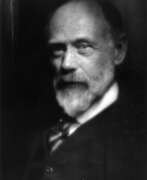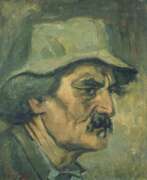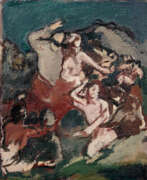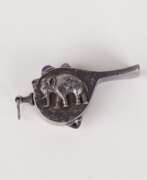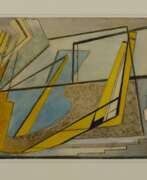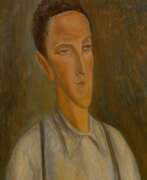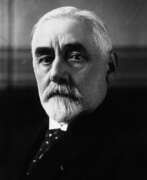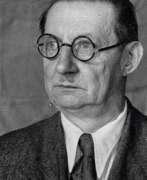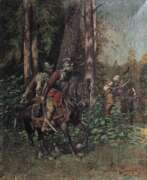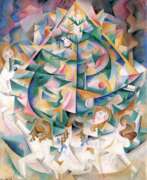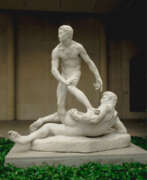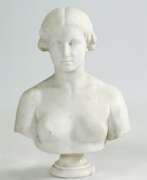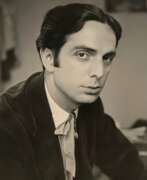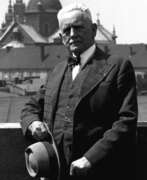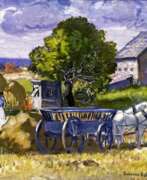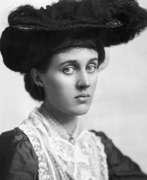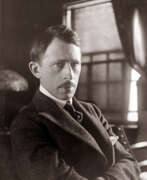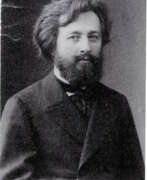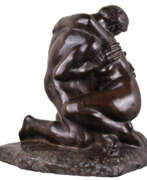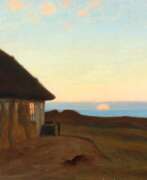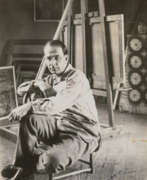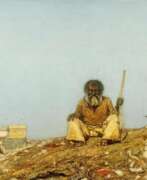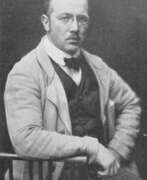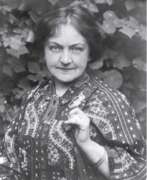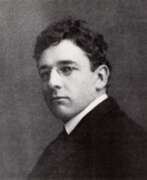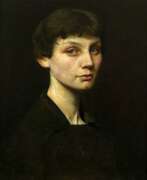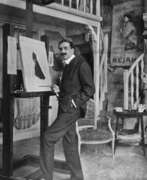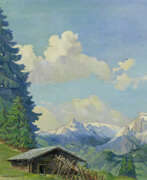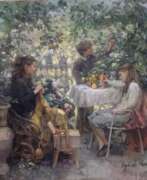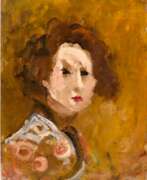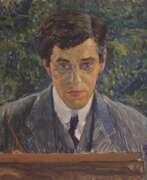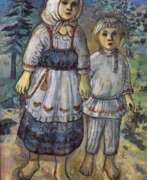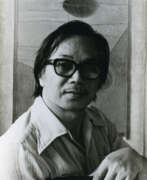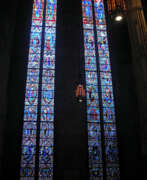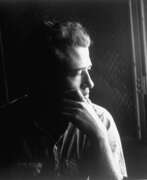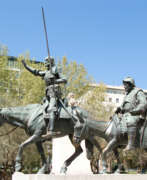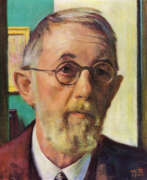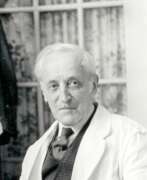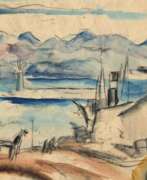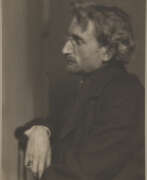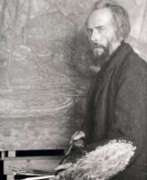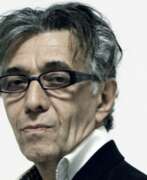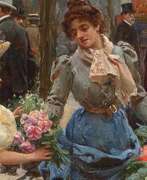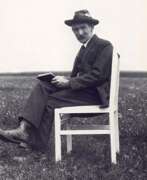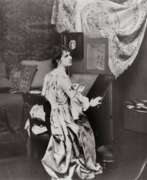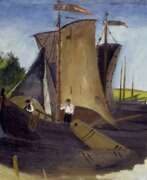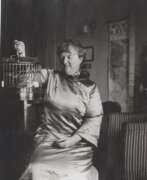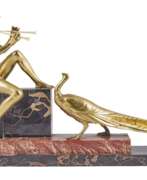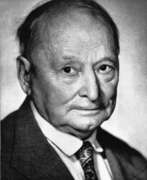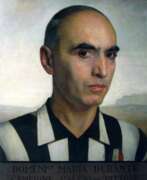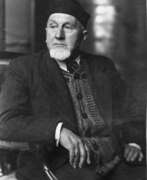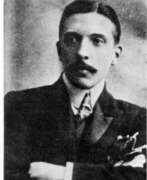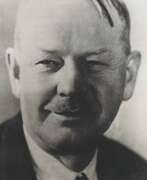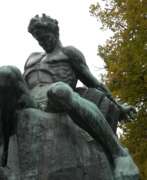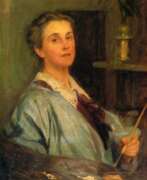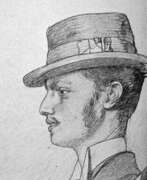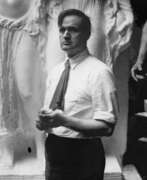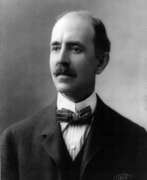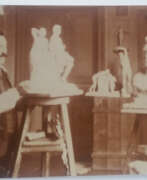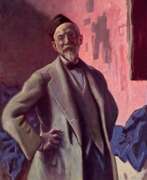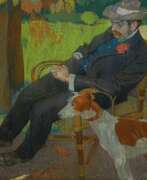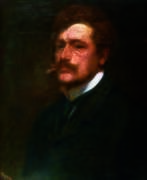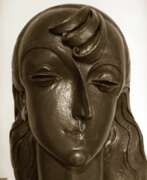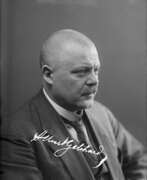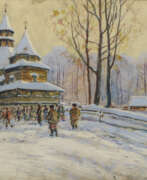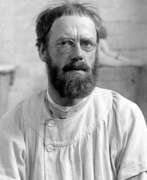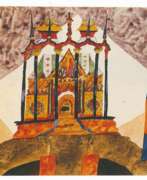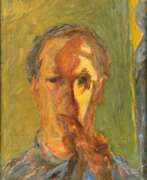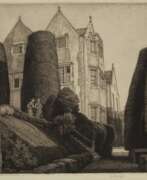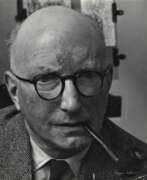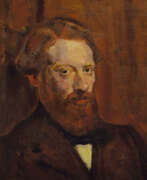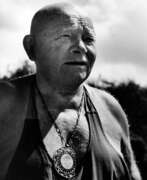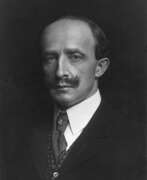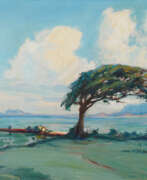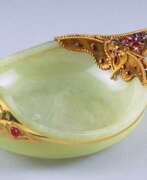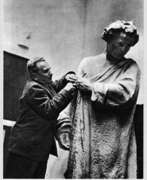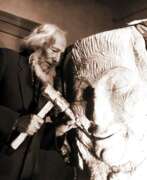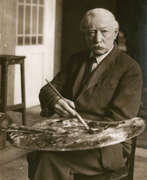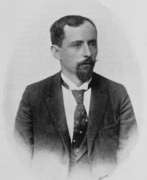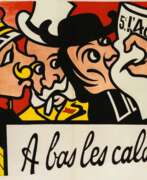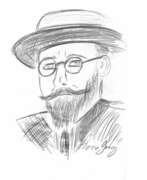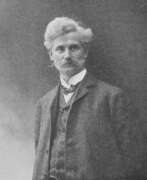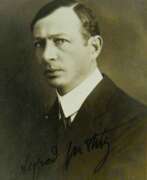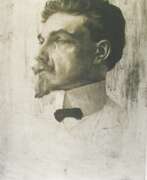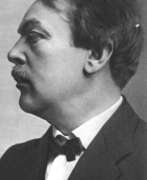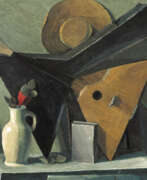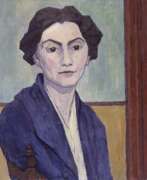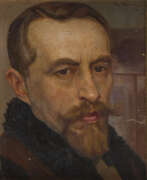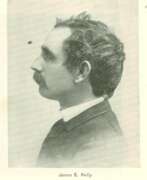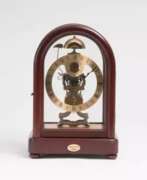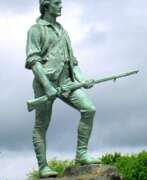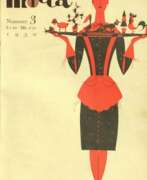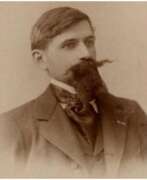Contemporary art 19th century
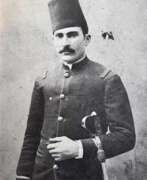

Abdul Qadir Al Rassam was an Iraqi painter of the first half of the twentieth century. He is known as a painter and graphic artist and is considered the founder of modern Iraqi painting.
Al Rassam, a military officer by training, studied drawing at the Military College in Istanbul. Returning to Iraq, he created landscapes, portraits and murals. His work is characterized by historical and ethnographic accuracy. The master, according to critics, contributed to the influence of the European academic school on the Iraqi art scene.
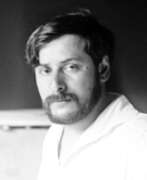

Boris Izraelievich Anisfeld (Russian: Борис Израилевич Анисфельд) was a Russian-American painter, set designer, illustrator, and educator, celebrated for his vivid use of color and imaginative scenery. Born in Bessarabia, Russian Empire, in 1878, Anisfeld's artistic journey led him from the Odessa School of Art to the Imperial Academy of Arts in Saint Petersburg, where he absorbed the influences of prominent artists like Ilya Repin and Igor Grabar. His distinct style caught the attention of Sergei Diaghilev, leading to his work with the Ballet Russe before World War I.
Anisfeld's contributions to art extend beyond his canvas, as his theater designs for Diaghilev's Ballets Russes and collaborations with notable figures like Michel Fokine and Anna Pavlova showcased his ability to blend fantasy with performance. His work with the Ballets Russes, including designing the production of "Sadko" and executing the visions of other celebrated artists for stage sets, marked a significant period in his career before he immigrated to the United States in 1917.
In America, Anisfeld continued his legacy, taking on roles such as a teacher at the Art Institute of Chicago and contributing to the cultural landscape through his stage designs and paintings. His work is recognized for its innovative approach to color and form, bridging the realms of painting and theater design to create immersive, emotionally resonant artworks. Anisfeld passed away in 1973, leaving behind a body of work that continues to inspire and captivate audiences.
For collectors and experts in art and antiques, Anisfeld's work represents a fusion of Russian and American art traditions, enriched by his imaginative approach and vibrant palette. His contributions to the development of modern art and theater design underscore the enduring relevance of his creative vision.
To stay updated on exhibitions, sales, and auctions related to Boris Israelievich Anisfeld, sign up for updates. This subscription will ensure you're informed about new opportunities to explore and acquire works by this influential artist.
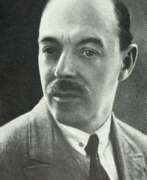

Anatoly Afanasyevich Arapov (Russian: Анатолий Афанасьевич Арапаов) was a Russian and Soviet artist, born in St. Petersburg in 1876 and passing away in Moscow in 1949. His artistic journey began after graduating from high school in 1892, leading him to study at the Moscow Boundary Institute where he initially acquired artistic skills. Arapov's dedication to art became undeniable, prompting him to enroll in the Moscow School of Painting, Sculpture and Architecture in 1897, where he was deeply involved in applied art, book design, and theater.
Arapov's early works, particularly around 1900 and 1910, were influenced by Symbolism, but he transitioned through a phase of Constructivism in the 1920s before dedicating himself to Socialist Realism from the 1930s onward. His versatile talent spanned across painting, graphic arts, and set design, making significant contributions to theater and film. Notably, he designed plays for leading theaters across major Russian cities and worked on popular films in the 1920s and 1930s.
His oeuvre includes portraits, still lifes, and landscapes, featuring views of ancient parks and Russian architecture. Arapov's works are celebrated for their stylistic diversity, capturing the essence of Symbolism, Constructivism, and Socialist Realism. His contributions are recognized in museum collections, including the State Tretyakov Gallery and the Saratov State Art Museum named after Radishchev, among others.
For collectors and art experts, Arapov's works offer a glimpse into the evolving art styles of early to mid-20th century Russia. To stay informed on sales and auction events featuring Anatoly Afanasyevich Arapov's art, signing up for updates can provide exclusive access to new discoveries and opportunities to acquire pieces by this multifaceted artist.
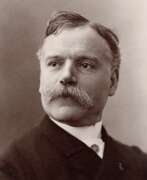

Jules Chéret, a French artist and lithographer, revolutionized the world of advertising and poster art in the late 19th and early 20th centuries. Born in Paris in 1836, Chéret's innovative techniques and vibrant style earned him the title of "the father of the modern poster," a distinction that highlights his significant contributions to the graphic arts. His work was greatly influenced by the Rococo movement, drawing inspiration from artists like Jean-Honoré Fragonard and Antoine Watteau, which is evident in his joyful and lively representations of women, known as 'Chérettes.' These figures broke away from traditional depictions, celebrating femininity with elegance and a sense of freedom, thereby contributing to a more open atmosphere in Parisian society.
Chéret's mastery of lithography, a printing technique he believed would dominate over traditional letterpress, allowed for the production of colorful and dynamic posters. His approach to lithography was revolutionary; he simplified the chromolithographic process by using three primary colors and treated the limestone with a painterly technique that included animated brush lines and soft washes. This enabled him to produce posters that were not only advertisements but also highly regarded pieces of art. His first major commission came in 1858 for Jacques Offenbach's "Orpheus in the Underworld," marking the beginning of a prolific career that would redefine poster art.
Chéret's legacy is vast, with his works now coveted by collectors and art enthusiasts around the world. In 1895, he created the "Maîtres de l'Affiche" collection, which featured smaller reproductions of the best works by ninety-seven Parisian artists, further cementing his impact on the art world. His influence extended to inspiring a new generation of artists, including Henri de Toulouse-Lautrec and Charles Gesmar. Despite his passing in 1932 in Nice, Chéret's contributions to art and culture remain celebrated, and his innovative posters continue to be a source of fascination and admiration.
For collectors and experts in art and antiques, Chéret's work represents a pivotal moment in the history of graphic design and advertising, blending artistic merit with commercial appeal in a way that was groundbreaking for its time. His posters, characterized by vibrant colors, dynamic compositions, and a distinctively cheerful and liberated portrayal of women, offer a glimpse into the cultural and social milieu of Belle Époque Paris.
If you're intrigued by Jules Chéret's work and wish to explore more about his contributions to art and advertising, consider signing up for updates on new product sales and auction events related to his work. This subscription will provide you with the opportunity to deepen your understanding of Chéret's legacy and perhaps even add a piece of his history-making art to your collection.
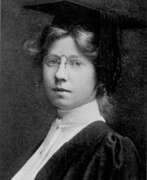

Imogen Cunningham was an American photographer known for her botanical photography, nudes, and industrial landscapes. Cunningham was a member of the California-based Group f/64, known for its dedication to the sharp-focus rendition of simple subjects.
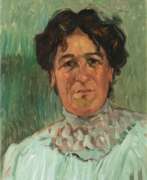

Alma del Banco was a German artist of the first half of the twentieth century of Jewish origin. She is known as a painter and graphic artist and is considered a representative of Art Nouveau.
Alma del Banco, who began her career as an artist rather late, was already a recognized figure of the Hamburg art scene in the early 1920s and one of the founders of the Hamburg Secession art group. At the beginning of her career she was strongly influenced by Cubism, then her artistic style changed, it became less schematic and her work became more meticulous. The artist achieved considerable success in the portrait genre. However, after the Nazis came to power in Germany, she was banned from exhibiting and her work was declared "degenerate art".


Maynard Dixon was an American painter and illustrator. Dixon became known for his Western landscapes, Native American images, scenes of cowboys and shepherds, and his work during the Great Depression.
Dixon studied in San Francisco and New York, where he worked in magazine illustration. He also traveled throughout Europe, where he found inspiration in the work of Renaissance artists and the Impressionists. Upon his return to the United States, however, he began to pursue the genre of Western painting, which became his main passion. One of Dixon's most famous series of works is The Myth of the West, in which he depicted the Western landscape and cowboys using bright colors and geometric shapes. His work was popular in the 1920s and 1930s, and he was often invited to exhibit his work in museums and galleries.
In addition, Dixon also worked as an artist-designer for film studios, creating sets and costumes for Westerners. His work has been used in such famous films as Mutiny on the Bounty, The Sheriff, and Mighty Joe Yankee. Maynard Dixon's work is in the collections of many museums, including the National Museum of Western Painting in Oklahoma City and the Fenimore Cooper Museum in New York City.
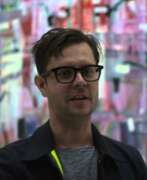

Tomory Dodge is an American artist. He graduated from the California Institute of the Arts in Valencia, California, in 2004. Before that, he had a solo show at the Taxter & Spengemann gallery in New York. He paints landscapes with a Surrealist influence, the paint applied broadly with a brush or palette-knife.
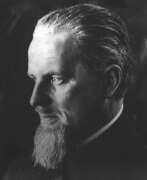

Ivan Semyonovich Efimov (Russian: Иван Семёнович Ефимов) was a Russian and Soviet artist of the first half of the twentieth century. He is known as an animal painter, graphic artist, sculptor, illustrator and reformer of the puppet theater.
Ivan Efimov worked in different genres and techniques, but all his work, including decorative and applied art, was focused on animalistic themes. He created works for the Moscow subway, train stations, sanatoriums and many other places and became famous for his technique of through volume relief in sculpture. The master also illustrated more than 20 books.
Efimov also created erotic works - about a thousand sheets with various thematic series, but the public learned about them only after the collapse of the USSR.
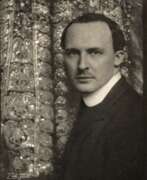

Willi Geiger was a German artist of the twentieth century. He is known as a painter, graphic artist, illustrator, exlibrist and teacher, a representative of Expressionism.
From the beginning of his career, Geiger created illustrations for the works of famous authors. In later years he became interested in portrait painting, painting copies of works by Spanish masters, especially El Greco, Velázquez and Goya. Geiger was one of the first modern graphic designers. His son Ruprecht Geiger also became a renowned painter and sculptor.
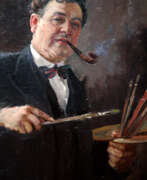

Aleksandr Mikhailovich Gerasimov (Russian: Алекса́ндр Миха́йлович Гера́симов) was a Russian and Soviet painter, born on August 12, 1881, in Kozlov (now Michurinsk), in the Tambov Governorate of the Russian Empire. He is best recognized for his leading role in promoting socialist realism in visual arts, notably through his portraits of Joseph Stalin and other Soviet leaders. Gerasimov's education at the Moscow School of Painting, Sculpture, and Architecture honed his skills, guided by masters like K.A. Korovin, A.E. Arkhipov, and V.A. Serov. His style, a blend of academic realism with impressionistic influences, vividly depicted the Russian landscape, leaders, and the daily life of the Soviet era.
His works, rich in emotionality and composition mastery, span across various themes from state portraits to landscapes and still lifes, showcasing a deep love for the Russian landscape's innate beauty. Gerasimov's contributions to art include not only significant political portraits but also captivating scenes of nature and life in Russia, marked by their emotional depth and vibrant colors. His paintings like "Stalin and Voroshilov in the Kremlin" won him the Stalin Prize in 1941, cementing his status in Soviet art history.
Gerasimov's artistry extends beyond his political work; his landscapes and portrayals of Russian expanses convey a deep lyrical sentiment, reflecting his profound connection and love for his homeland. His mastery across various mediums—oil, watercolor, gouache, and more—allowed him to explore and express a wide range of subjects, from portraits and landscapes to still lifes, showcasing his versatility and depth as an artist.
For those interested in the intersection of art and history, Aleksandr Mikhailovich Gerasimov's work offers a fascinating window into Soviet-era Russia, its leaders, and its landscapes. To stay updated on exhibitions and sales of Gerasimov's works, sign up for updates specifically focused on new product sales and auction events related to this distinguished artist.
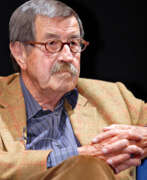

Günter Wilhelm Grass was a German novelist, poet, playwright, illustrator, graphic artist, sculptor, and recipient of the 1999 Nobel Prize in Literature.
Grass is best known for his first novel, The Tin Drum (1959), a key text in European magic realism. It was the first book of his Danzig Trilogy, the other two being Cat and Mouse and Dog Years. His works are frequently considered to have a left-wing political dimension, and Grass was an active supporter of the Social Democratic Party of Germany (SPD). The Tin Drum was adapted as a film of the same name, which won both the 1979 Palme d'Or and the Academy Award for Best Foreign Language Film. In 1999, the Swedish Academy awarded him the Nobel Prize in Literature, praising him as a writer "whose frolicsome black fables portray the forgotten face of history".
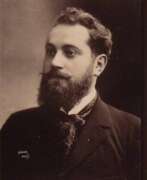

Albert Guillaume was a French artist, cartoonist, illustrator, and master of the poster.
Guillaume was a prolific illustrator: he worked for magazines, books, and almanacs, and his satirical drawings were published in Parisian humor magazines. He was also a painter and designer of theater posters and advertising posters. Working for the large Parisian printing company Camis, he designed a series of highly successful posters for commercial goods.
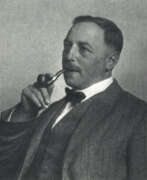

Thomas Theodor Heine was a German-Swedish artist of late nineteenth and early twentieth centuries of Jewish origin. He is known as a painter, draftsman, illustrator and writer.
Heine co-founded the popular German satirical weekly Simplicissimus, where he printed his drawings and caricatures. He also collaborated with the magazines Flying Pages and Youth, illustrated books, and created advertising posters and erotic drawings. After the Nazis came to power, the artist fled to Sweden, where he obtained citizenship. His works were presented at a retrospective anniversary exhibition in Stockholm in 1947, a year before Heine's death.
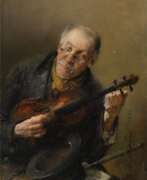

Carl Horn was a German artist of the first half of the 20th century. He is known as a painter and graphic artist who specialized in nudes, landscapes and portraits.
Horn created many exlibris in the Art Nouveau style early in his career. He painted city and seascapes, genre scenes and portraits using watercolor and oil. His work was characterized by lyrical realism and a sensitive, harmonious and richly colored palette. Horn was also the director of the Nordic Academy of Art in Bremen.
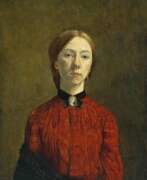

Gwendolen Mary John, or Gwen John, was a Welsh post-Impressionist painter who spent most of her life working in France. Her drawings number in the thousands. Most of Gwen John's paintings depict figures (usually girls or nuns) in interiors, painted with great sensitivity and unobtrusive dignity. The artist also left many images of cats.
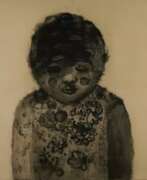

Jung-Hyun Yoo is a contemporary korean artist. For him paintings are a chapter in which one is able to explore both psychological and physical depths. The ink spatters are part of a process which divides the background and the subject which is marked as a 'boundary making' procedure. The stains of coincidence, embracing the black fragments to rub, wipe, supplement, and adorn are Yu Jung Hyun’s process of making a 'warm skin'. Besides the interior and the exterior, the figure and the background, the visual and cognitive conflict and contrast grant the forms a pictorial existence. The characteristics of his work is that it conveys a print-like appearance and that they are drawn on a unique textured surface.
